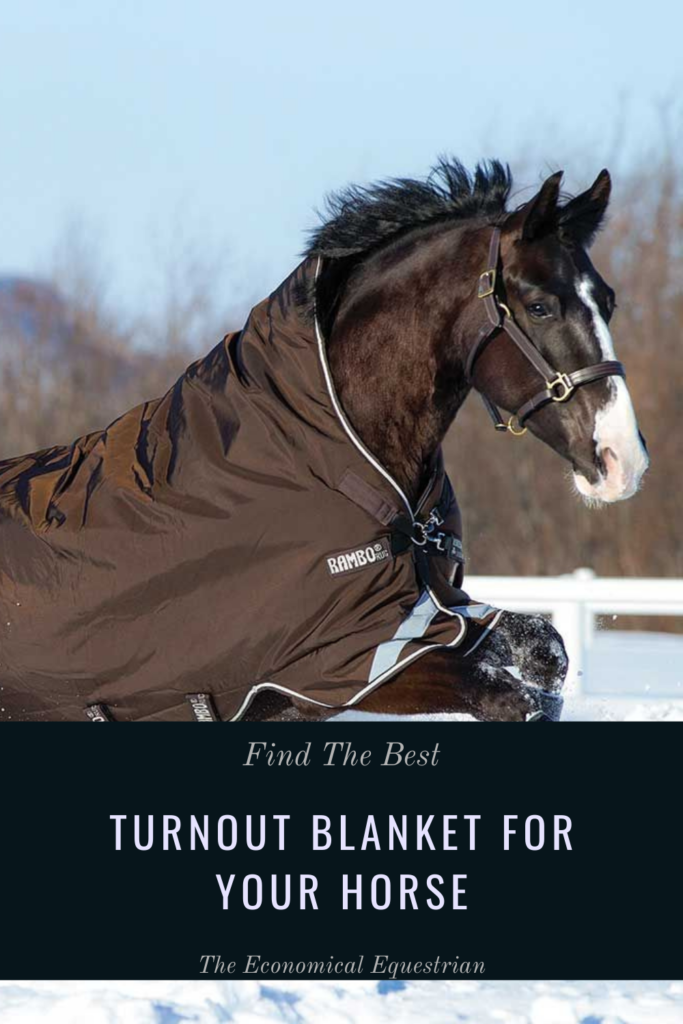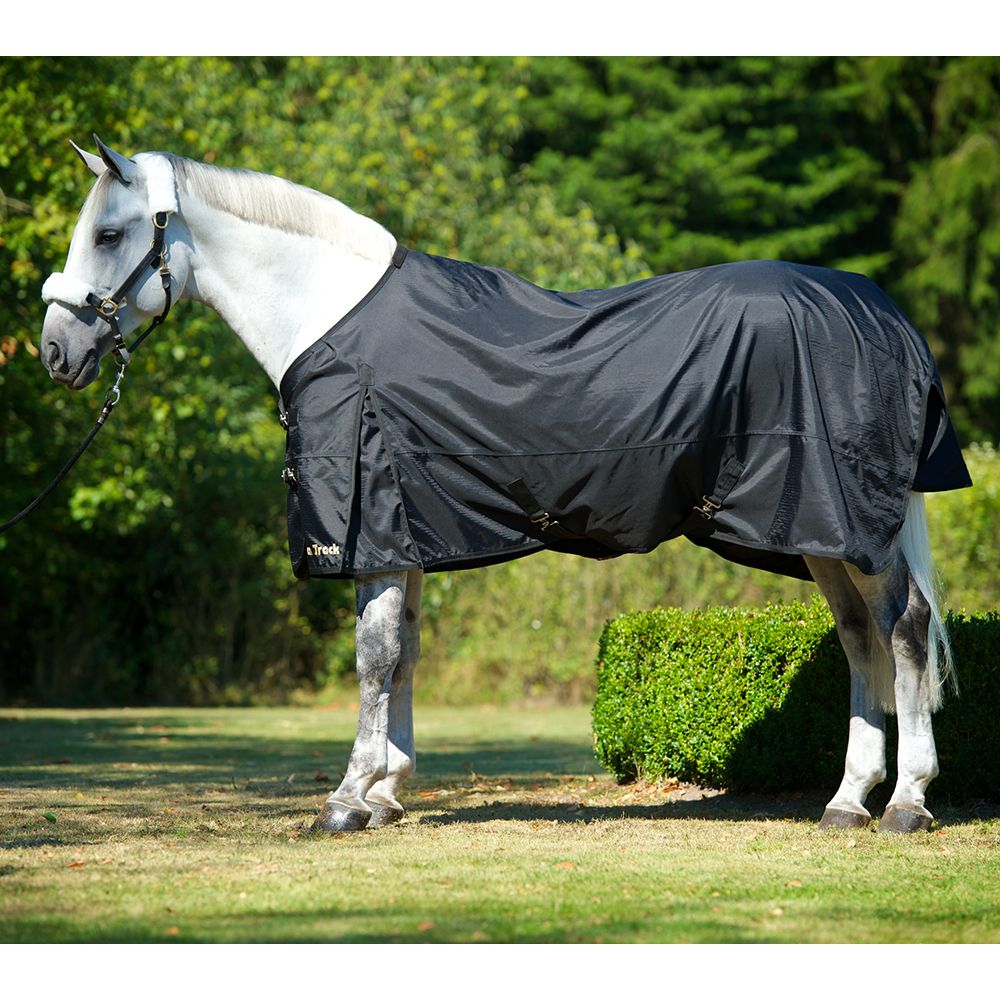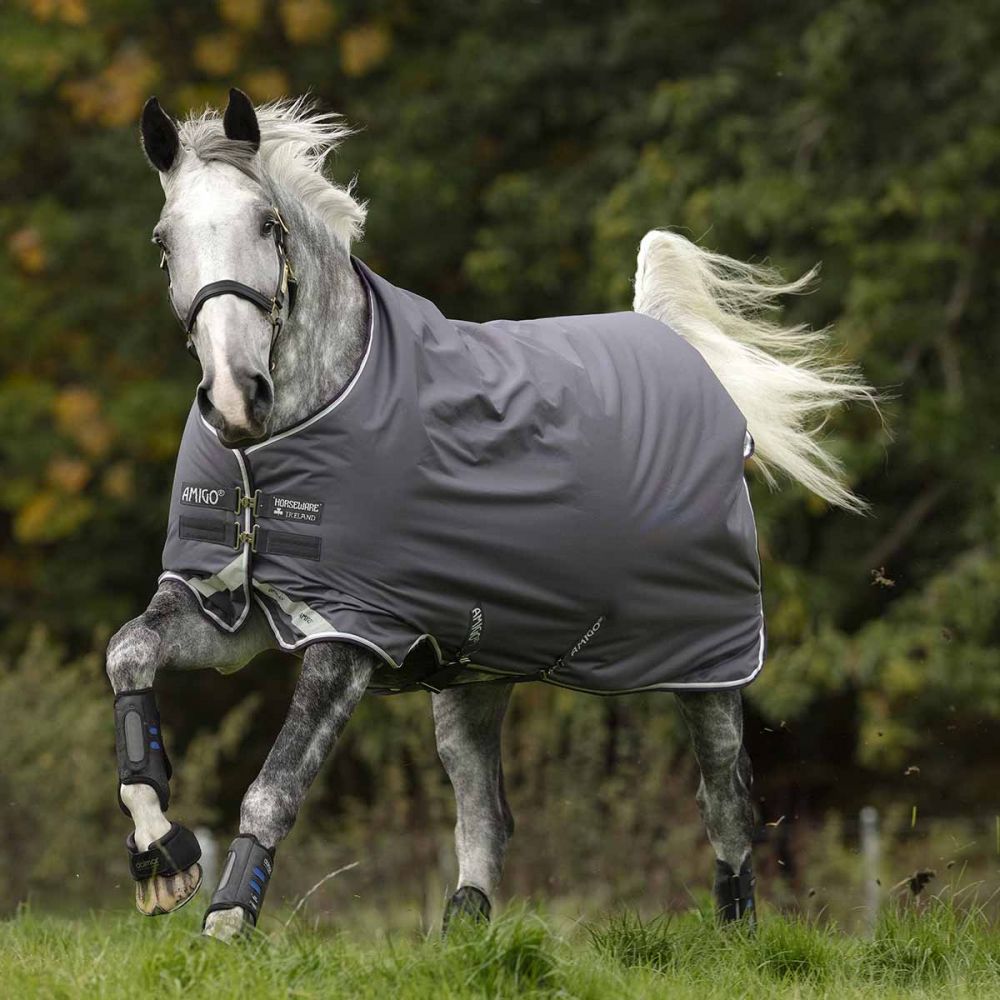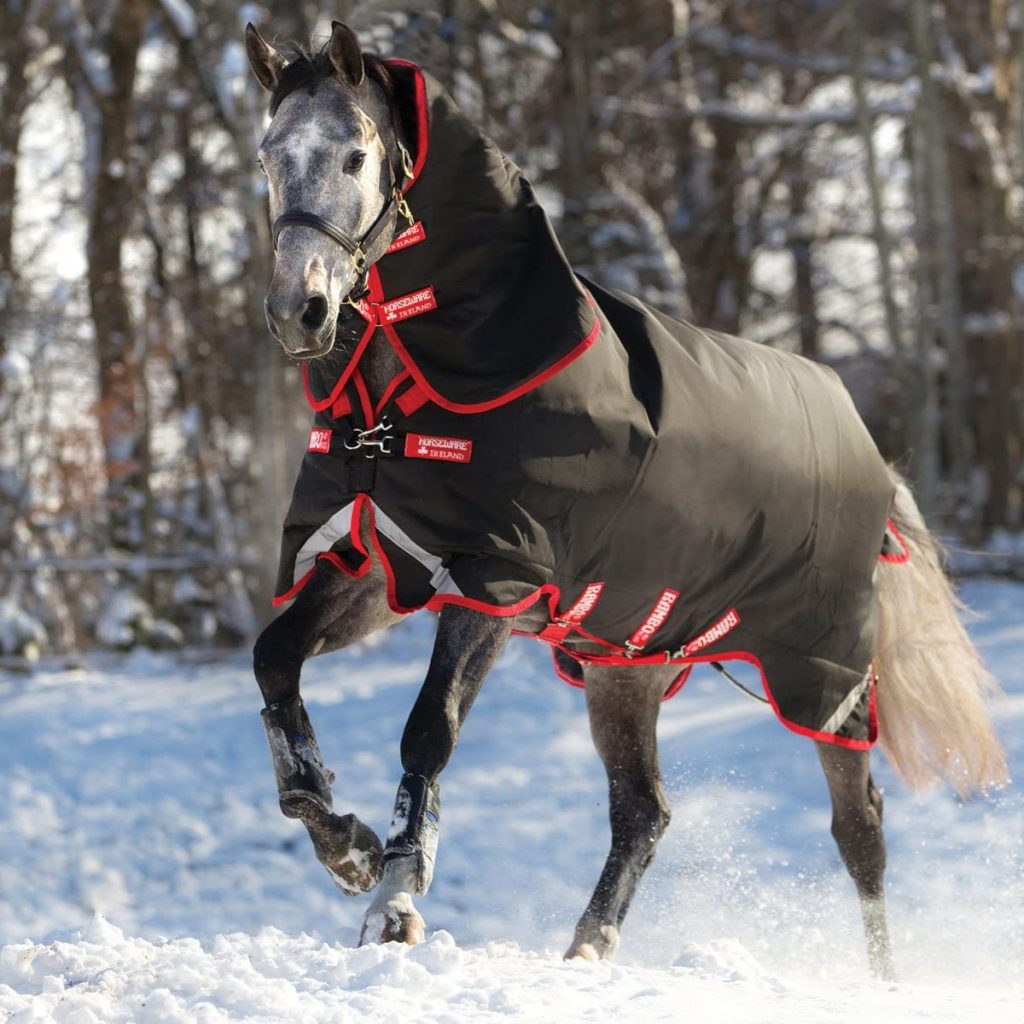Despite what we’d all like to believe, winter is coming. And if you live anywhere that the weather dips below freezing, you’ll need to consider blanketing your horse. So how do you choose a turnout blanket for your horse?

There are a few main factors to consider.
First, does your horse need a blanket?
There are tons of opinions out there about this topic. Many people can agree that horses who are elderly, have compromised immune systems, don’t have access to shelter, or have to be exposed to wind and wet at the same time may need a blanket.
Is your horse cold? IE shivering or not acting normal? Then your horse probably needs a blanket.
Have you heard of the FAKE CSU study that stated horses should not be blanketed because they have the ability to adjust their hair to retain warmth? Oh wait, remember, it’s not true!!! Please stop sharing this on Facebook each year.
Horses do fluff out their coats when it is cold, and this should give them some insulation against the cold and wet. Putting on a blanket possibly negates some of the benefit of this ability but a blanket also adds insulation to your horse, so it will warm them up as well.
If horses are constantly exposed to the elements – like rain, snow and/or wind, and act cold or uncomfortable, then a blanket will likely be helpful for them. On the other hand, if you live in a temperate area, your horse probably does not need a blanket. It seems as though a lot of blanketing is to make people feel better when they are chilly, not when a horse is actually cold.
I can tell you that when my horses are kept inside (ie dry and out of the wind) they are fine without blankets down to at least 0 degrees. But when they are outside where it is windy or possibly snowing, and they have come in shivering, I would put a blanket on.
second, what are the reasons why your horse may need to be blanketed?
You might need to blanket your horse if they are:
- Older/elderly
- Compromised immune system or other health issues
- Body Clipped
- Have no winter coat or moved from a warm environment
- Lack of adequate shelter
A horse that is older may require a blanket because they cannot keep themselves warm like they could when they were younger. As a horse ages, they may also have a decreased ability to eat hay which is an important way that horses keep themselves warm. So don’t be afraid to blanket a senior horse if they need a little help when it’s chilly.
If you choose to body clip your horse (which can cut down on drying time after sweating in the winter), your horse will need a few different blankets to stay warm and comfortable. There are benefits to body clipping but you must monitor your horse’s temperature and blanketing more than a non-clipped horse. Once clipped, a horse loses a lot of natural ability to keep warm.
Most horses do have access to shelter, but if your horse does not, then they may need to wear a blanket. Horses are pretty good at keeping themselves warm, but if they are exposed to strong winds and wet weather, they will get cold quickly.
What is the best turnout blanket for horses?
The Best turnout blanket or sheet for your horse is going to have a few key features.
The first is that it needs to fit! If you are going to blanket your horse, it is very important that a blanket fits your horse and they won’t get caught in ill fitting straps or a too big/too small blanket.
The next is that the turnout is waterproof. That is the nature of a turnout sheet – it is waterproof and durable so your horse is protected from the elements. Make sure you check that your horse’s blanket(s) are waterproof each year. If your blanket is no longer waterproof, use a waterproofing spray before putting it on your horse.
Another important feature of the best turnout blanket for horses is that it is the correct weight for your horse and the weather they are experiencing. You don’t want too heavy of a blanket, as your horse will be too hot. And you don’t want too light of a blanket or your horse might be cold (especially when you flatten their hair with a blanket that isn’t warm enough).
Turnout Sheet Basics
There is a lot of discrepancy between what weights of horse blankets are suitable for what temperature. Your horse should be warm but not hot underneath a blanket, and definitely not sweating. If your horse is sweating or feels hot, they need no blanket or a lighter weight blanket.
What size blanket does your horse need?
Horse blankets are measured by taking a measuring tap from the middle of your horse’s chest, to the end of the rump or middle of their tail. Horse blanket sizes typically range from 52″-90″. I say typically because you can get custom blankets in a different range of sizes, and draft horses will need even larger blankets than 90″. My big mare wears an 87″ blanket, which is pretty dark big!
To give you a simplified idea of horse blankets – my 16.1 hand OTTB wears a 76 or 78″ – depending on the brand. My 17.2 hand warmblood/Percheron wears an 87″. So you really need to measure your horse to know what size they will wear.
Denier
Blankets come in a variety of deniers. Denier is the weight or thickness of the fibers used for fabric. Denier refers to the weight of 9,000 meters of a fabric thread. So the higher the denier, the more heavy or durable, the material. You will notice horse blankets range from 500-2000 denier. I usually aim for higher than 1,000 denier when looking at blankets.
Brand
I’m not set on a specific brand of blankets, I think it depends on your horse and their body. I try to pick durable blankets that fit my horses comfortably. My favorite fit is with Rambo or Rhino. These are high quality blankets that will last a long time.
Some top horse blanket brands:
the types of turnout blankets available for horses:
No Fill/Light Weight Turnout Blanket for Horses
This is a waterproof turnout sheet that does not have any fill, or has just a little fill. Light weight turnout blankets are best suited for warmer weather, or horses who have their winter coats, but need a little help staying dry. Just keep in mind that a blanket without fill is not going to give your horse much insulation against the cold. These turnout sheets can be used for keeping a horse clean or dry, as their waterproof properties are highly beneficial.
An example of a no fill turnout sheet:

The Best Lightweight Turnout Blankets for horses:
- Back on Track Turnout Sheet $238.95
- Amigo Mio Turnout Sheet $59.95
- Rambo Wug Turnout Sheet (w/high neck) $339.95
- Weatherbeeta ComFiTec Plus Dynamic Sheet $129.95
Midweight Turnout Blanket
A medium weight turnout sheet has a moderate amount of fill (typically 150-300 grams of fill). A medium weight turnout may be the heaviest blanket your horse ever needs depending on your climate. It is heavier and more insulating than a lightweight or no fill turnout. If you get some cold temperatures but not sustained below zero temps, a mid-weight turnout sheet is probably a great option for your horse.
Here are some top pics for medium weight turnout blankets for horses:
- Rambo Wug Turnout – Medium weight $295.96
- Amigo Stock Horse Medium Turnout $91.96
- Tough 1 Medium weight Turnout $94.95
An example of a medium weight turnout blanket:

Heavy Weight Turnout Blanket
A heavy weight turnout sheet is the warmest and most insulating option that is available. Usually the amount of fill is 300g+. A heavy weight sheet should keep your horse warm and toasty, but definitely is not suitable for a moderate temperature nor when the temperature is rising quickly the following day. Your horse will be uncomfortable and sweat in a heavy weight sheet if it is at all warm outside.
The best heavy weight blankets are going to keep horses warm in very cold climates as well as provide extra insulation to horses who might be clipped and need a heavier turnout blanket to stay warm.

Some of the best heavy weight turnout blankets for horses:
- Bucas Heavy Weight Turnout Sheet $174.95
- Weatherbeeta Comfitec Essential Combo Heavy Weight $144.95 (This sheet includes a neck cover)
- Rambo Supreme 450g heavy weight horse turnout blanket $459.95
Horse blankets are not cheap! (Let me say that Rambo blankets are really expensive, but they are durable and fit my high withered horses, so the price is worth it in my opinion).
Need a little help saving up and preparing for a bigger purchase?
Learn how to set and reach a money saving goal
Additional options for turnout sheets and blankets:
If a medium or heavy weight isn’t warm enough on it’s own, you can also layer blankets to warm your horse up.
A horse may need a stable blanket or liner under another turnout sheet to be warm enough. Some blanket brands offer an easy to use system for adding liners to their blankets, such as Rambo. But you can always add an insulating and non-waterproof layer under a turnout sheet if your horse needs more warmth from their turnout sheet.
It is always important to put a blanket on a dry, clean horse. Sometimes they are wet before we get to put a blanket on. If it is difficult to dry your horse, putting on a wicking fleece sheet under a warmer blanket, then remove the liner once your horse dries. The fleece blanket will likely be damp, so you’ll want to take it off once your horse dries out.
Do you blanket your horse? I try to blanket a horse that is uncomfortable and cold, not just putting on a blanket if I am cold. But it’s up to you!
Leave a Reply